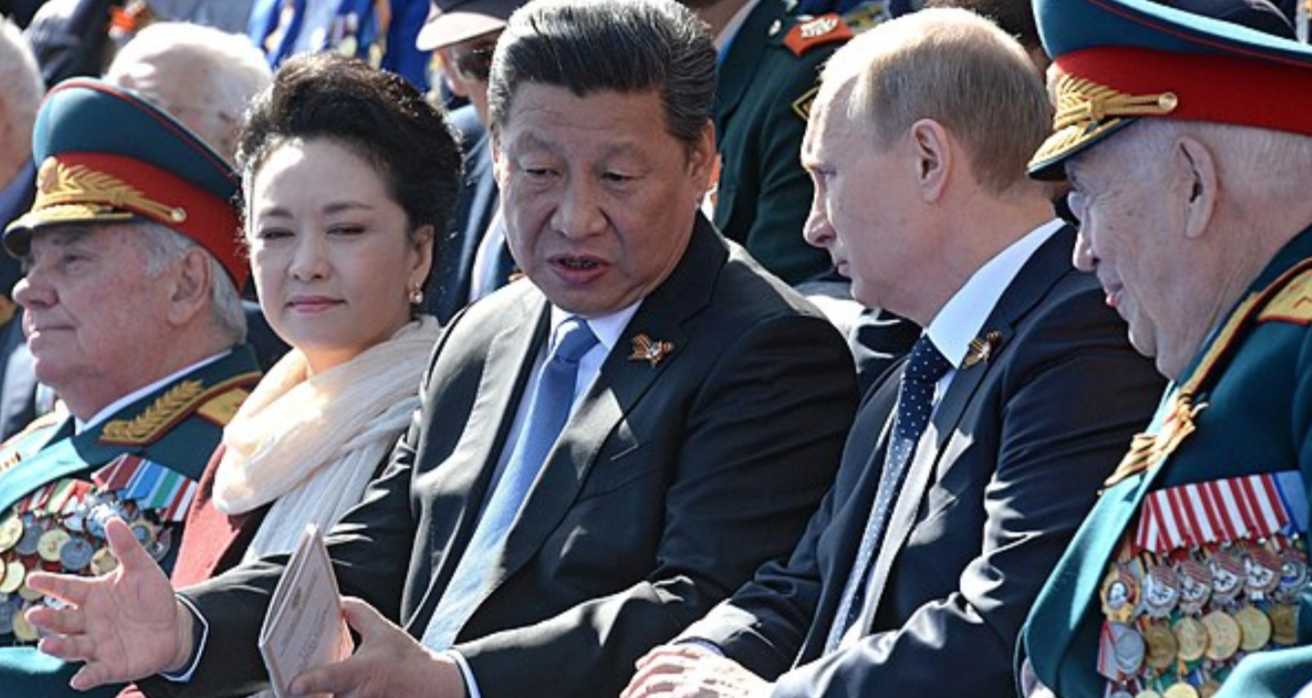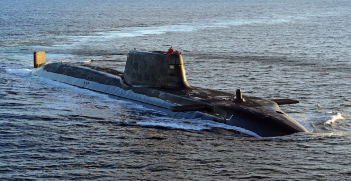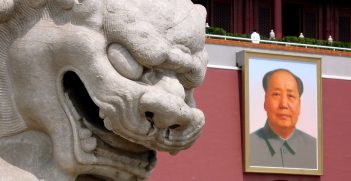The Key to Moderating Russian Behaviour is China

While the Russia-China has developed beyond an “axis of convenience,” it is not an alliance. The result is that China will hold the key to moderating Russian behaviour in the future, and that the Chinese and Russian interests will not always align.
Much has recently been written about the increasing closeness of the Russia-China relationship. Certainly — on the face of it — there is reason to conclude it is becoming more than a simple “axis of convenience.” Numerous meetings between Xi Jinping and Vladimir Putin culminated in the signing of a document on comprehensive partnership in June 2019, where Xi called Putin his “best friend.” Two-way trade between the two nations grew by 25 percent in 2018 alone. The Russian and Chinese militaries have conducted joint exercises in the Mediterranean and in the Sea of Japan, prompting some observers to refer to the relationship as an alliance in everything but name.
Beyond the optics, how closely can we expect China and Russia’s interests to continue to converge? Should the West be concerned that all it has really achieved in the aftermath of the Cold War is to recreate bipolarism? And how should Australian policy professionals judge the future trajectory of the relationship, and plan accordingly?
Let’s start with the economic dimension. It is true that trade between the two nations has increased markedly, especially in the strategically important sectors of energy, communications and connectivity. China is now Russia’s biggest client for oil. Russia has invited Huawei to build its 5G architecture. And while progress on transport corridors to improve trade flows has been slower, Russia in particular has been keen to spruik their eventual benefits, based on the much-touted “partnership of equals” between the two states.
But is it really such an equal partnership? For one thing, the trading relationship is heavily imbalanced in Beijing’s favour. While China is Russia’s main trading partner, Russia only comes in at number 10 on the list of Chinese partners. More worryingly for Moscow, a broad-based economic partnership has not eventuated, in spite of grand announcements to the contrary.
Partly this is because Chinese investors are concerned about the levels of corruption in Russia. Yet there is also a strategic dimension. As a result of Western sanctions, Beijing has adroitly exploited Moscow’s urgent need for investment in its energy infrastructure projects, which gives it the kind of leverage that Putin himself used against former Soviet republics during the resource diplomacy wars of the mid-2000s. By matching that investment with other energy projects in Central Asia, it has also diversified its energy sources, lessening any potential dependence on Moscow, and reducing its energy risk profile in the process. The upshot? Russia is now in the position of exporting raw materials to China, and buying its finished products. That’s hardly an equal relationship.
In the military-strategic realm too, Russia is increasingly being forced to accept the position of junior partner. At first glance this might seem counterintuitive against the backdrop of Putin’s military modernisation project, which commenced soon after the brief Russo-Georgian war of 2008. Yet the PLA has been modernising as well, and at a scale that Russia cannot hope to match in future. Its own defence budget has trebled since 2008, from a little over US$50 billion to over US$150 billion in 2019. This has resulted in significant force projection capabilities, which include amphibious assault as well as the capacity to project land power. Chinese military planners now have the capacity to think beyond notions of defence-in-depth, with an array of conventional options augmented by new long-range missiles and advances in railgun technologies.
In contrast Russia has managed only a green water-plus capability in its Pacific Fleet, which will be the main Russian naval force for the vital Asian theatre. It has also been forced to rely much more on weapons of mass destruction, adopting an assured first use policy under its “escalate to de-escalate” nuclear strategy. Also noteworthy is that of all the “doomsday” weapons that Putin dramatically unveiled at his state of the nation address in 2018, the majority — from plutonium powered cruise missiles to unmanned nuclear drones — were designed to fight and win wars where nuclear weapons are a first resort.
The pattern of Russia as the junior partner following China’s lead is also mirrored in institutional arrangements and preferences. While Putin has been keen to tout the benefits of China’s Belt and Road initiative, his vision of a Eurasian Economic Union to complement it has largely stalled. Repeated Russian calls for the Shanghai Cooperation Organisation to become an “Asian NATO” have also not eventuated, with China’s desire for it to act as an energy and connectivity hub winning out. Finally, China has also been quietly undercutting Russian attempts to establish itself as a major alternative partner for South-East Asian and Pacific nations.
How should Australian policy professionals respond to the Sino-Russian partnership? While it has developed beyond an axis of convenience, it is not an alliance, and is also looking much more like a partnership of unequals rather than coequals. Hence it is important to resist the urge to think of the two states as peer partners. This leads to an important and under-recognised conclusion: China will hold the key to moderating Russian behaviour in the future.
For one thing, China has much more leverage over Russia than the West. For another, as it cements its own alternative regional order in Asia, Beijing will increasingly have structural incentives to ensure that Russian zero-sum behaviour against the West does not come to shape the dynamics of its own relationship with Moscow. That might be cold comfort on issues like human rights and meddling in democratic elections: two issues where Russia provides China with diplomatic support and useful distractions respectively. Yet on matters of state sovereignty and trade, Beijing will increasingly be motivated to rein Russia in, particularly if Russian adventurism has to the potential to harm its interests.
A second conclusion we can draw is that Russian and Chinese interests will not always intersect. Putin’s preference has always been for Russia to act as a pivot state — a Euro-Pacific great power — with itself at the centre. This is a geopolitical vision not dissimilar to Australia’s own notions of an Indo-Pacific strategic space. But also like Australia, Russia may find itself less capacity to shape regional affairs in the new disordered Asia-Pacific that is emerging. In fact, despite the positive rhetoric, Russian elites are concerned that they have forced themselves into the position of China’s raw materials appendage.
A compact with the West is out of the question for the moment given the Russian perception that the West is moribund, and the West’s insistence that Moscow would need to walk back its behaviour in Crimea, Ukraine, Syria and its information operations against the US and EU nations. But there are nonetheless still rub-points between Russia and China — especially over energy exploration — for future Australian and Western policymakers to potentially exploit in future. As Lord Palmerston famously put it, nations have no permanent friends or allies: they only have permanent interests. To assume the former rather than the latter in the Sino-Russian relationship would be counterproductive, and paradoxically help to bring them closer together.
Associate Professor Matthew Sussex is the academic director at the National Security College. He specialises on Russian foreign and security policy.
This article is published under a Creative Commons Licence and may be republished with attribution.





